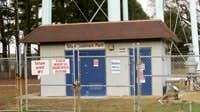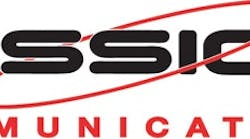Marlboro Water Co. (MWC) is a small water utility nestled in the Pee Dee area of South Carolina, a region rich with natural resources—including freshwater streams, forests dense with hardwoods and abundant wild game.
MWC acquires water from the Middendorf Aquifer, which supplies five groundwater wells ranging from 281,000 to 410,000 gal per day (gpd) on average. Chlorine, phosphate and lime are added at two separate treatment facilities to disinfect and control pH. Following treatment, the water is housed in three elevated storage tanks with capacities ranging from 200,000 to 300,000 gal.
For almost 40 years, MWC has supplied the communities within Marlboro County and surrounding industrial neighbors with potable water. Before 2008, a functionally obsolete monitoring system caused MWC to invest resources that could have been better utilized elsewhere. The system often failed to provide useful and accurate data, causing employees to question its validity.
As a result, several daily tasks were performed manually. Costs gradually increased, which eventually led to budget problems.
MWC began searching for a way to reduce operating costs, increase system efficiency and preserve the supply of water resources.
Bobby Brock, general manager of MWC and president of the South Carolina Rural Water Assn., began this search by conducting an evaluation of the existing monitoring system. It consisted of simple pressure switches and dedicated phone lines. Not only were the phone lines expensive, but the system failed to provide recorded data points for efficient operations and reporting. Insufficient information proved to be taxing on the equipment and the employees.
“We had no way to know if the pumps were coming on or going off other than physically being at the treatment plant,” Brock said. “There was also no way for us to know in real time if there was a leak in the system.”
When leaks occurred, they went undetected for long periods of time. Field personnel had to visit the treatment plants and tanks several times a day to inspect for problems. The phone lines were highly susceptible to failure during heavy storms, which often resulted in a loss of communications. With no communications, employees had to be on site in order to adjust system controls manually. Operation costs were elevated due to water loss, frequent inspection visits and emergency site visits during storms.
Searching for SCADA
Following the system evaluation, Brock began searching for a SCADA system that would better suit the needs of MWC. Because SCADA systems have a reputation for being expensive, he was doubtful that MWC could implement something at an affordable price—now or in the future.
“We are a small water company with about 2,000 customers,” Brock said. “Most of the larger water utilities have SCADA with a million-dollar-plus price tag; I knew we could not afford this type of system.”
About four years ago, Brock attended a Rural Water Assn. presentation demonstrating managed SCADA by Mission Communications. MWC explained the problems it was facing and Mission proposed a simple yet effective solution: the tank and well control option paired with its standard remote terminal units (RTUs).
“I was impressed with what Mission could do to help us, and the price was affordable for a small water utility such as MWC,” Brock said.
Because there were no phone lines to install, the new SCADA system was operating and logging data in less than two days. MWC now has the ability to remotely monitor and control pumps in real time, obtain data for system analysis and visibility, and receive immediate alarms. The historical data assists with system evaluation and loss prevention. The quantified savings have not been documented; however, Brock stated that “the savings are many.”
Each tank site is equipped with an M800 RTU and a level transducer. Each well site also is equipped with an RTU, but it is wired to take advantage of the included output relays for pump control. Commands are automatically sent to turn the remote pumps on or off. Desired water levels (chosen by the user) and actual water levels determine when the commands are sent.
“We configured our system so that our main tank controls the pumps in three separate remote groundwater wells.,” Brock said. “We set the high- and low-level boundaries for all of our tanks on our Web portal. The alternator feature automatically rotates the pumps so that run times are equally distributed.”
MWC employees do not have to physically inspect the treatment plants for potential problems nearly as often, because the new SCADA system monitors and gathers data for analysis. They visit the treatment plants once daily to add lime and other disinfecting agents. Future plans include a new treatment plant and upgrades to the existing treatment plants. New, innovative processes will reduce visits even further. By utilizing Mission’s managed SCADA and removing phone lines that were often damaged during heavy storms, MWC is able to operate and monitor regardless of weather conditions.
The system can be accessed from any Web-enabled device, including smart phones and tablets.
“Having the ability to monitor and update the system using iPhones instead of computers gives my employees access to the system while they are away from their desks,” Brock said. “If there is a problem at one of the sites, we typically know what it is before we get there. This has made our lives easier and has given us a lot more flexibility.”
Recordkeeping for the South Carolina Department of Health and Environmental Control was a time-consuming manual task prone to errors before installing the SCADA system. After the installation, the recordkeeping tasks were automated, which freed up personnel for more valuable pursuits. MWC is now able to monitor and record pH and chlorine levels by utilizing a data analyzer that interfaces with the SCADA system. Reports and graphs updated in real time help MWC with its water conservation efforts.
The amount of water loss has been kept below 10%. Spikes in water usage have been detected and resolved. For example, MWC has a water tank on the northwest side of town (the pump controlling tank) and another tank on the south side of town. If there is a major leak, personnel can quickly determine if the leak is on the northwest or the south end of by analyzing the graphs and determining which tank level is depleting the quickest. Once the location of the leak is identified, crews are sent out to resolve the problem. Quick problem identification keeps the annual unaccounted-for water low and prevents larger problems from occurring.
“I can determine from the tank level graphs if the equipment is performing at its best,” Brock said. “We are immediately informed if any of the tanks are emptying rapidly or if wells are pumping more than normal. The system has allowed us to do so much more than what we originally needed it for.”
Download: Here



